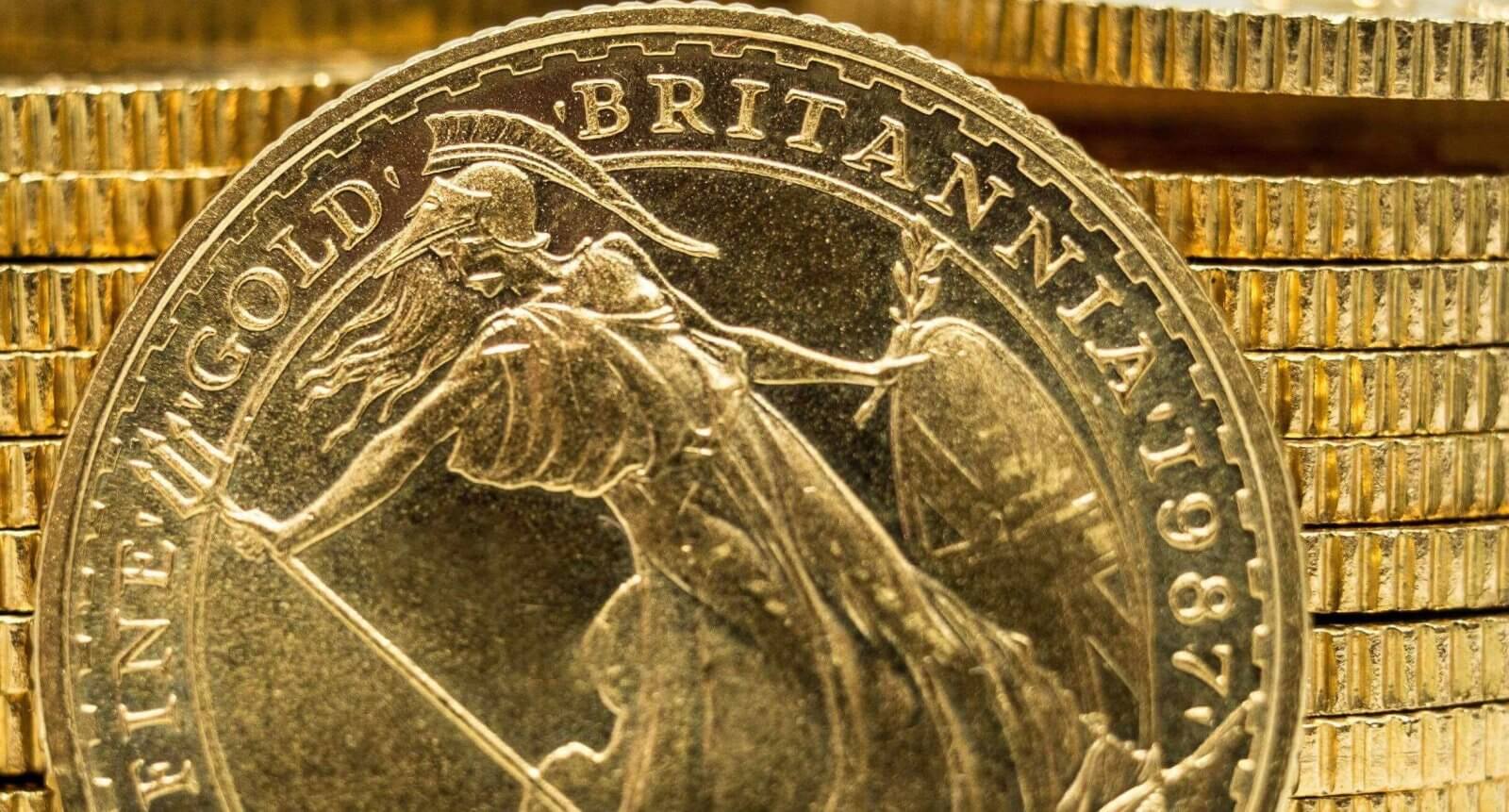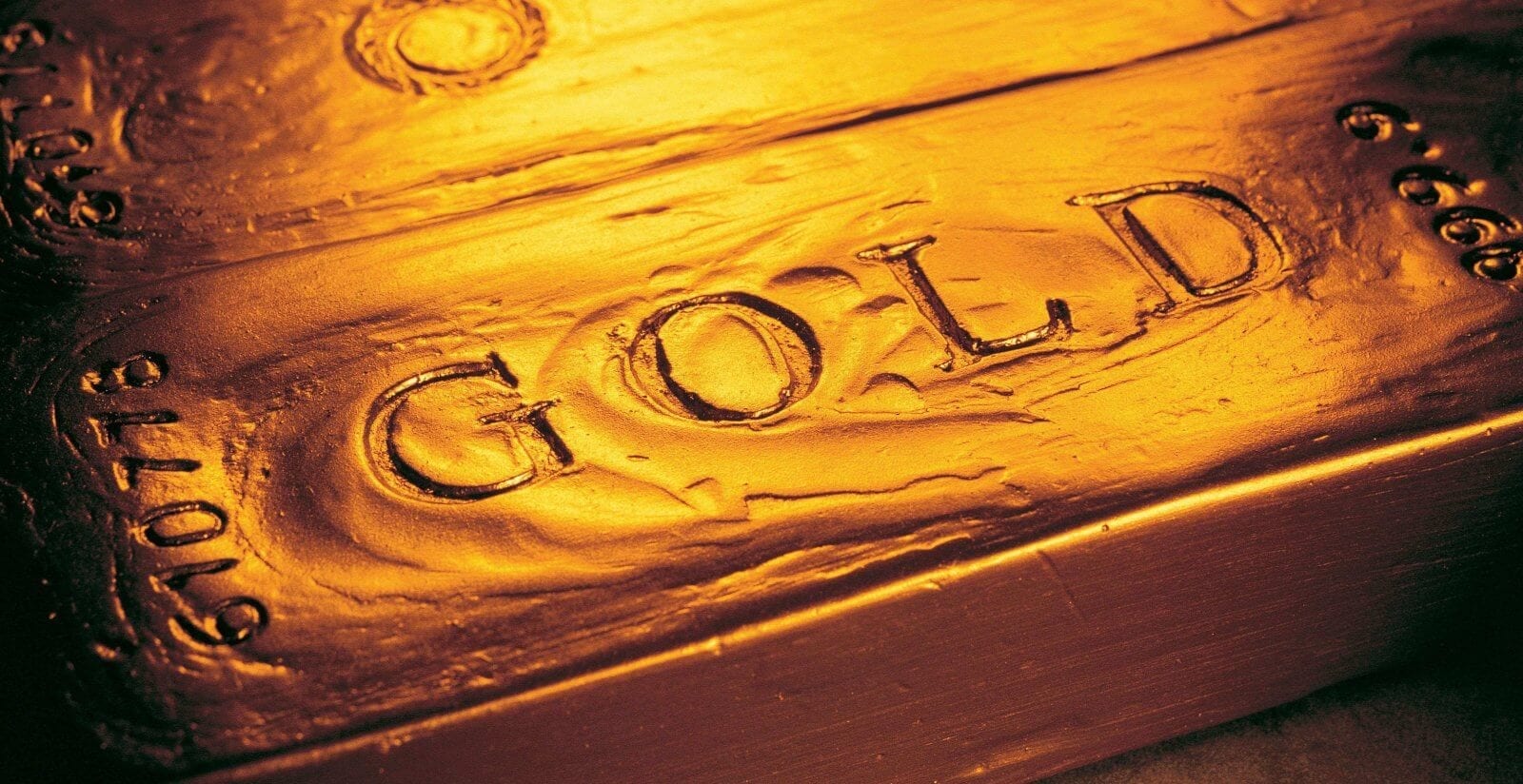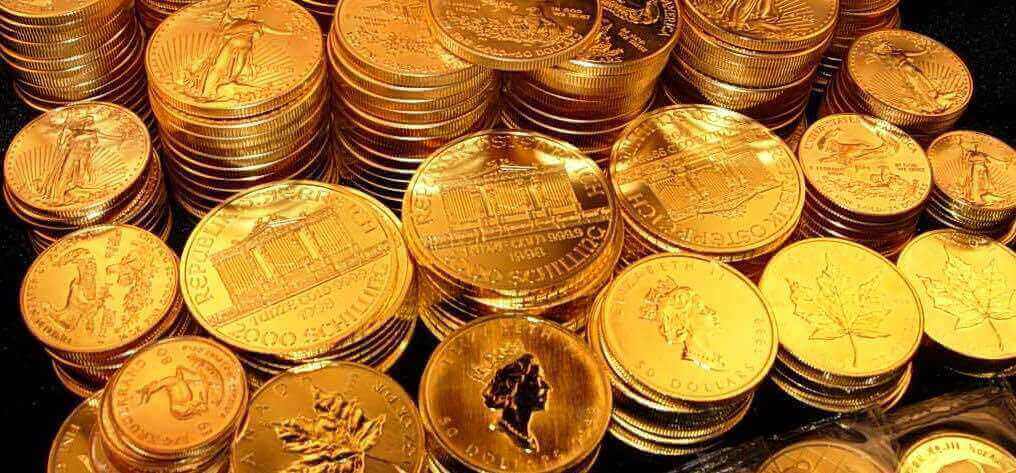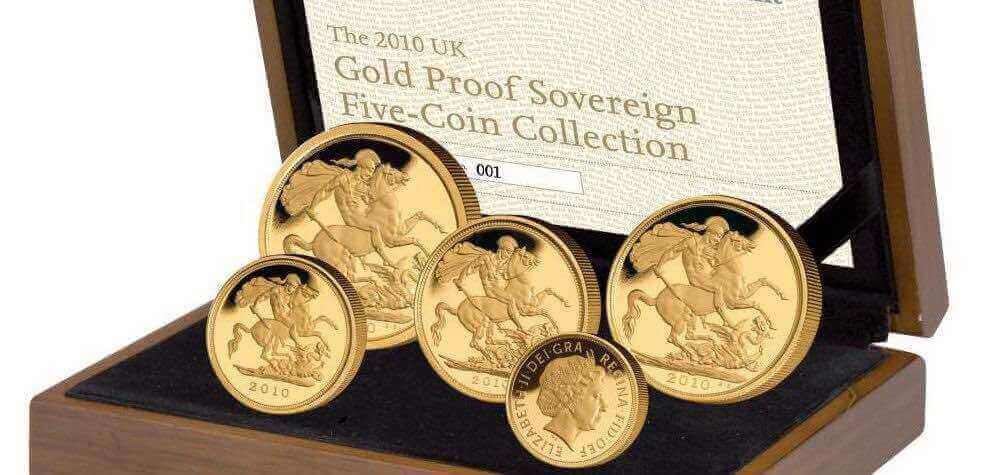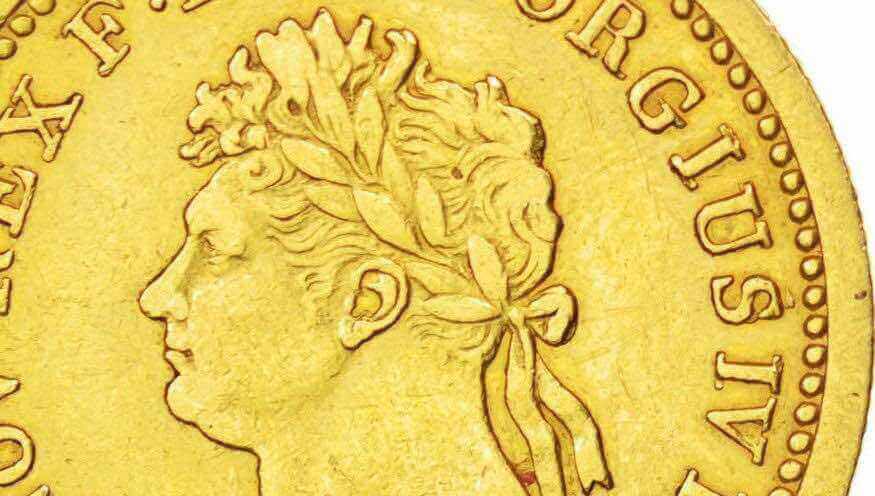Guides
Types of Gold
Various Gold Investments
While our focus is physical gold bars and coins, it’s important to consider all different types of gold when considering an investment. Gaining exposure to the gold market can be achieved in a number of ways, each with their merits and likely one may suit your objectives more than others. We evaluate each option available here. In the meantime, if you conclude that it is indeed the tangible physical gold which appeals, then read on.
Different Types of Physical Gold
When people think of types of gold, they usually imagine huge brick-like gold bars, in vast, elitist bank vaults. Or they might imagine pirate-like treasure chests, full of gold coins. Others imagine nuggets of gold, prized from the earth, or some various expressions alluding to gold dust.
Our most frequent encounter with gold is with jewellery – whether it be gold rings, necklaces or bracelets. Gold jewellery as an investment differs from gold coins and gold bars in several ways. Firstly, it has a use. You can gain pleasure from wearing jewellery. Apart from running your fingers through it, gold coins and bars don’t have an actual use (although owning it still provides pleasure!). Secondly, gold jewellery has a design element which can make each piece unique.
We also see gold in leaf form (which is usually 22 karat gold) more often than you might think. Very thin layers of gold are used for gilding and have been used throughout history to adorn fine artwork and also as a decoration (e.g. in book covers). At a microscopic level, gold is also available as gold dust, this has value if enough can be accumulated into one piece.


So, is jewellery a worthwhile investment?
This design element means the value of the gold jewellery is subjective. The price you pay for jewellery far exceeds the value of the gold content itself. For this reason, gold jewellery tends to be less effective as a form of investment than gold coins and bars. If the gold price rises, your jewellery will appreciate at a slower rate, as its value consists of subjective design value, not just gold. The only way gold jewellery will ever rise in value faster than gold bars or coins is if the designer becomes renowned or the piece becomes very rare.
High relative production cost
The biggest problem with investing in gold jewellery is the making charge. Essentially, this is the cost associated with the production process, which includes design. There are labour costs involved with this that cannot be recovered when you sell that jewellery back into the market. Dealers only pay for every ounce of gold that’s actually in the jewellery. Moreover, 24 karat gold is no good when it comes to crafting jewellery. It’s way too malleable to retain shape and bring out all the detail in the design. So, 18 or 14 karat gold is the material of choice for making jewellery. This means when, you’re buying jewellery, you’re not getting gold with 999.9 purity.
Inefficient use of gold
In addition to the above, there are wastage charges to consider. To create attractive gold jewellery that boasts of stunning designs, there’s unwanted gold that’s removed and discarded as scrap. However, the customer, i.e. you, still have to pay for this. So, you’re paying for gold that doesn’t actually come to you. Wastage charges may be as much as 5 to 7% and could vary with each job. Interestingly, as most jewellery is crafted today using precision technology and high-quality machines, not a lot of gold should actually be wasted. However, jewellers continue to charge customers ‘wastage charges’ as a percentage of the actual cost of making the jewels. Also, it’s important to remember that gold, as a precious metal can simply be melted down and used again by the jeweller. So, in essence, the customer ends up paying for gold that is reused by the jeweller.
Cost calculation of gold jewellery
The actual costs of ordering custom made gold jewellery from a jeweller can be calculated as the total amount of gold to be used, priced at the spot price on that day, labour and making charges, wastage charges and VAT. If your jewellery includes precious stones, that’s yet another component you need to include within the pricing. Also, one needs to be sure of the exact karat of gold being used and if you’re not careful, you could well end up paying for 18 or 22 karat gold, while your jewellery could be made out of gold with lesser purity. Often customers are at sea when it comes to all this, due to an inherent lack of understanding of the intricacies and mechanics of the gold jewellery industry. Most customers would not own professional equipment for measuring the purity of the metal or stones. All of this adds up to the uncertainty and risks associated with investing in gold jewellery. Of course, gold jewellery continues to remain evergreen, as it symbolises the status and power of the person wearing it.
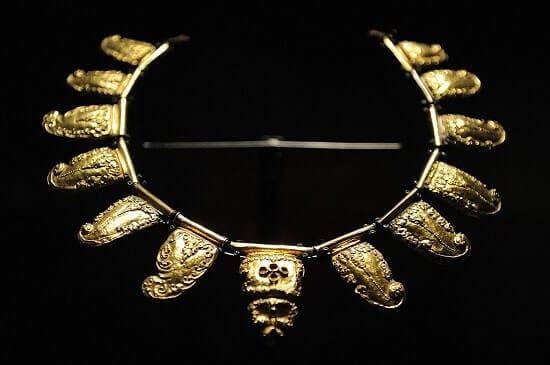

It’s true; there are many different types of gold for investment,
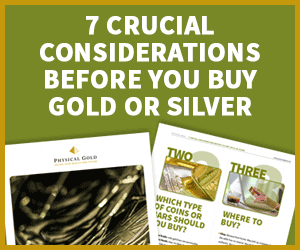

The world of jewellery transforms gold into various colours for several reasons:
- Appeal – customers want gold in various colours for design/aesthetic reasons
- Durability – gold is highly malleable and bent/scratched easily. Adding other metals increases durability
- Price reduction – by adding cheaper metals, the price of the jewellery is reduced
Popular colours used in the jewellery industry for gold are:
- Blue gold – created by adding indium or gallium
- Green gold – also called Electrum this is created by adding silver and copper
- Purple gold – usually consists of 79% gold and 21% aluminium, so is 18 karat gold
- Rose gold – made by adding copper and silver, with a higher proportion of copper than in green gold
- White gold – created by adding platinum or palladium, especially popular in jewellery designs
- Yellow gold – naturally reddish yellow the intensity of yellow can be intensified by adding copper, silver and zinc
Investment Gold
Part of our process is helping you choose the best type of gold investment to meet your individual goals. Whatever your circumstances, you should always stick to the recognised forms of investment gold.
The HM Revenue & Customs definition is gold in the form of a bar or coin with a minimum purity of 995 thousandths for bars and 900/1000 for coins (minted after 1800). In short, that’s 22 karat gold coins and 24 karat gold bars.
Why does this matter to me?
There are a few benefits of focussing on investment-grade gold.
1. The quality and purity of gold are assured and consistent. You always know exactly what you’re getting. I like to think of it as buying a bottle of wine from the supermarket, which is a brand you know, and the alcohol content is clearly stated. Compare that to buying alcohol in the prohibition era, and you never knew what you were drinking! This certainty is particularly important with a high-value investment where you need to eradicate the risk
2. With standardised investment grade, gold such as well recognised bullion coins from renowned mints and Swiss manufactured gold bars, you enjoy the comfort of knowing your gold is liquid. This means it’s easy to sell whenever you need. That’s mostly down to the fact that these investment-grade gold coins (e.g. Sovereigns and Britannias) and bars are globally renowned and sought.
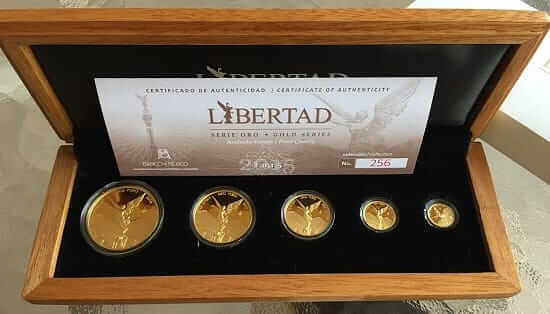

How can I benefit?
This helps both the speed at which you can realise your profit and also the price you can fetch. Compare this with the scenario of trying to sell non-investment grade gold such as a gold nugget. The uncertainty and ambiguity surrounding its purity, authenticity and weight will narrow buying opportunities dramatically.
3. Any gold classified as investment grade is VAT-exempt to purchase. Clearly saving 20% in the UK is a great incentive, especially when engaging in an investment. All the gold we sell is investment grade as we believe in focusing on value investments with tax efficiency a priority. If you’d like to learn more about VAT and how it works with precious metals, read our revealing analysis here.
One common misconception is that a 1oz 22 karat coin has less gold than a 1oz 24 karat coin or bar, but this is not true! All of these have 1oz of pure gold. The 22 karat coins simply have an additional 2 carats of an alloy (copper and silver) to improve their wear and tear.
Our gold credentials
We are one of the most reputed gold dealers in the business. Our company is a registered member of the British Numismatic Trade Association (BNTA). Our team consists of precious metal investment experts who have many man-years of valuable industry experience. We take pride in being able to leverage that expertise for your benefit. Our experts are best placed to discuss your investment goals and advise you on the best gold products to buy. Of course, we sell gold bars and bullion coins ourselves. We also sell coin sets, which contain sets of proof coins, which have great collector value to numismatic collectors. All our products come with a watertight certification of genuineness, along with a full buyback guarantee. We also offer our customers a highly secure storage and delivery service.
Watch the Physical Gold video – “The Gold price today & investing in gold medium to long term”
Diversification of investments is very important when it comes to gold investing, and those with a limited budget can take advantage of the monthly saver gold bundle from Physical Gold. With this plan, we source the best gold coins on your behalf and create a wonderful investment starter opportunity. This is a great way to eventually build up a robust physical gold portfolio, while taking advantage of the best prices in the market that we can source for you, due to our long-standing market expertise. As you receive and pay for your gold every month, the volatility in market prices is conveniently levelled out.
Speak to us about physical gold investing
For a friendly relaxed conversation about investments in physical gold and any aspect of this infographic call us now on 020 7060 9992. You can also complete our contact form at http://pglegacy.opacetempsites.com/contact.
There are four main types of gold mining, varying according to the country of production and their method of extraction. Placer mining, hard rock mining, byproduct mining and processing of gold ore. Gold which has accumulated as a placer deposit (naturally separated from rock through gravity) is extracted through placer mining which uses water as the loose material is unsuitable for tunnelling. This is the type recognised by many as typical gold prospecting, where manual panning can be used, although not commercially.
The most recognised gold mining is hard rock retrieval which uses tunnels underground and machinery in open pits to extract gold. The larger scale enables far greater quantities to be mined.
Of course, mining for other minerals can sometimes provide the added bonus of accumulating gold in small quantities. Typically, mining for copper and gravel can end of discovering deposits of gold as a by-product. Due to the scale of the operations, some mines subsequently find large quantities of gold this way.
Gold ore describes rock and earth with fine traces of gold which are extracted through the addition of chemicals. The use of chemicals (namely cyanide), is expensive for the small yield of gold achieved, so this method is shrinking in popularity.
There are three types of the gold standard. The Gold Bullion standard refers to an agreement to exchange paper currency for a fixed amount of gold bullion (not coins). The gold specie standard converts paper notes into the value of circulating gold coins. Finally, the gold exchange standard is where a government doesn’t use the first two methods of exchange but instead guarantees a rate between its own currency and that of another country who themselves use a gold standard. With the two currencies now tied, the first country is linked to the gold standard by default.
There are eight varying gold contract types on offer between the two main exchanges. The Commodity Exchange (COMEX) offers the most common simple gold contracts (GC), representing 100 troy ounces of gold, deliverable on several set dates. The gold volatility index (GVF) is a pure-play on volatility with a multiplier of $500 and cycles semi-annually. miNY Gold (QO)is aimed at the more modest trader, split into 50 troy ounce contract sizes. E-micro Gold (MGC) is the smallest of all, based on 10 troy ounces.
The Multi-Commodity Exchange (MCX) is based in India. The most recognisable is Gold futures (GOLD) with a 1KG notional size and a daily price limit of 3%. Gold Mini offers smaller contract sizes or 100 grams, while Gold Guinea is aimed at the smaller contract again, at just 8 grams each. All three pose a single person limit of 2 metric tonnes. Gold Petal is the final gold contract type, representing just 1 gram of gold each.
There is a total of 24 carats that make up pure gold. Each is of equal value and so is 1/24th pure gold by weight. Investment-grade gold is either 22 carat (most common amongst Sovereigns and other popular bullion coins) or 24 carats (now used for some 1oz bullion coins like the Britannia and most gold bars). Even 24-carat gold isn’t completely pure but instead will be somewhere in the region of 99.9% gold. Jewellery can commonly be made of lower carat gold such as 9 carats and 18 carats which are more resilient than higher purities, cheaper and more suited to clasping precious stones.
We have provided a separate post to answer this question. Click here for a detailed answer.
To read our detailed answer to this question, click this link.
Gold is located in many rock types, so prospectors are more successful searching for these rocks rather than for gold itself. Gold deposits can be found in quartz which itself exists in river beds and large hillside seams. Heavy particles like gold can also collect within a harder intrusive rock which is formed when molten magma squeezes between existing softer rocks. Gold deposits can also be unearthed at the bottom of Alluvium deposits in river beds. This is an accumulation of sediment gathered into one area of the river, with heavier materials such as gold resting at the bottom.
The most common distinction between gold types is their carat or purity. This can be difficult to simply detect with the naked eye. 24-carat gold is virtually 100% pure, while 9-carat purity is as low as 37.5% purity. In its purest state, the gold will be relatively soft, while it tends to feel harder to the touch when mixed with more alloys. The colour can also vary, with pure gold displaying a distinct yellow-orange. When mixed more with silver, the white gold effect is present, while red gold contains a higher amount of copper. Assay marks on the gold will display the purity but not all gold will be hallmarked. Other than that, it’s best to take it to a jeweller to safely perform a test and determine if it’s real in the first place!
Read our detailed reply to this question, by clicking this link.
With a conductivity score of 70%, gold is a popular choice for use in electronics. Most commonly, gold is used as an electroplated coating on contacts and connectors. It shines as the superior choice due to its high conductivity, corrosive resistance, and resilience (especially when mixed with nickel). Copper and silver are both cheaper and more conductive than gold, so tend to be used in a far wider array of electronic applications. Encasing electronics in gold is increasing in popularity to appeal to the luxury market such as the Gold Apple watch.
In the following sections, we run through the various coins and bars available.


